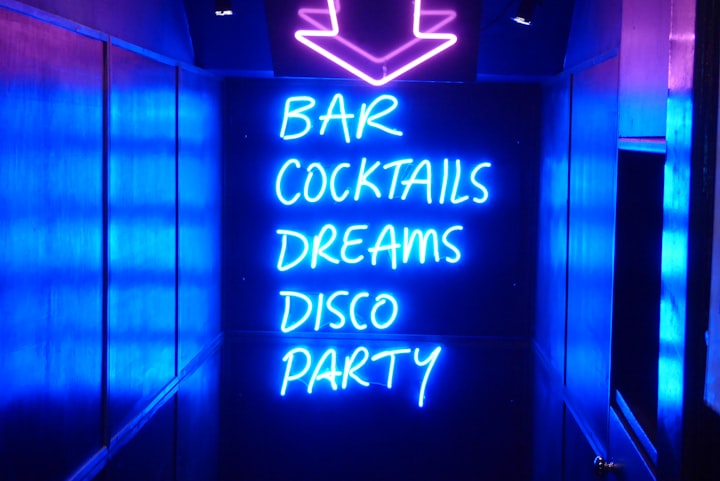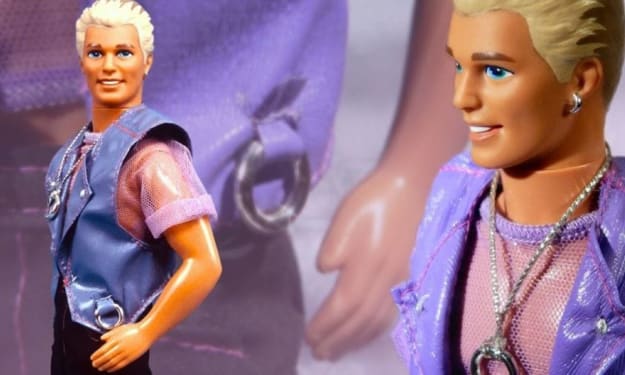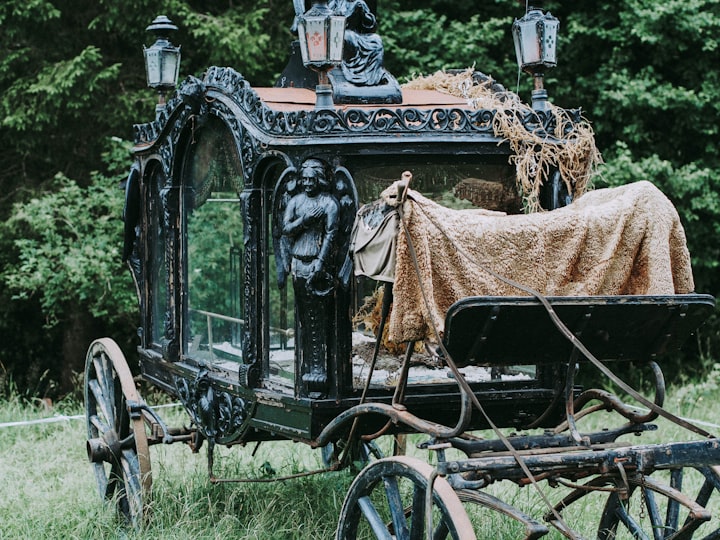How The Mafia Once Controlled The New York Gay Scene
The uneasy alliance that led to the modern LGBTQ+ movement

When we think of the mafia in the US, many of us may think of them as organized crime syndicates focused on bootlegging, drugs, and gambling. However, did you know they were also an instrumental, albeit uneasy, part of modern LGBTQ+ history?
Let's step back to the 1960s and head to New York City.
Despite being known as the decade of love, the early 1960s weren't exactly a fun time to be gay. Sure, being gay was no longer punishable by death, but there were still shades of illegality.
Legal discrimination, societal stigma, and ceaseless harassment plagued the LGBTQ+ community. To make matters worse, even finding a safe space to gather and enjoy a simple drink was a Herculean task.
Prior to 1967, it was the norm, and yes, perfectly legal, for establishments to shut their doors in the faces of LGBTQ+ patrons.
Since sexual orientation is less easily identifiable than racial or sex characteristics, the New York State Liquor Authority (SLA) established guidelines for service based on the concept of "orderly conduct." As you can imagine, public displays of homosexuality, such as holding hands, kissing, or dancing, were judged disruptive and disorderly conduct.
As such, those establishments that got caught serving alcohol to gay customers frequently had their operations raided and shut down because authorities perceived them as nothing less than "disorderly houses" where "illegal practices" were allegedly commonplace. Understandably, in order to keep their liquor licences and businesses open, gay men were routinely refused service at bars by the owners and staff.
"The targeting of gay bars was a particularly insidious thing because it was for gay people the only place they could be themselves. It took away the one safe place people had." - Kevin Jennings, Chief Executive Officer of Lambda Legal, the country's oldest legal organization focused on the civil rights of the L.G.B.T.Q. community.
But what about gay bars? Well, this may come as a shock, but New York's SLA relentlessly denied liquor licences to numerous gay bars, some of which had their existing licences suspended or revoked on grounds of alleged "indecent conduct." As such, many gay establishments operated without proper liquor licences, leaving them in a constant state of vulnerability and subjected to frequent raids and relentless acts of police brutality.
Essentially, drinking while gay was pretty much impossible.

Now, you may be wondering what happened after the change in law in 1967. Well, with the relaxation of restrictions, legitimate business owners seized the opportunity to invest in and establish gay bars of their own. However, the struggle for victory was far from over. Although bars in New York and New Jersey were no longer permitted to deny service based solely on one's sexual orientation, establishments could still refuse entry to individuals who openly expressed their gay identity.
Sensing an opportunity, the Mafia swiftly established hidden establishments for gay clientele, disguised as exclusive "bottle clubs," operating without the need for a licence.
The Ladder, a lesbian publication, noted, "Since the SLA refuses to issue licenses to gay bars, these bars are generally run…under unsanitary conditions."
But let's get one thing straight: this was not some altruistic act. During this time, the mafia had a strong presence in New York and controlled almost every facet of the city, from drinking, construction, cheese, gambling, sex work, jukeboxes, waste management, and the drug trade. They simply recognized a unique opportunity to cater to New York's marginalized yet vibrant gay community. This was all about profit for them.
Of the five families, it was the Genovese crime family that first asserted its control over the burgeoning gay bar scene in Greenwich Village.
Nestled in the southern reaches of Manhattan, this neighbourhood had become a sanctuary for a community yearning to embrace their true selves. In 1966, a young member of the Genovese family named Tony Lauria, known to friends and foes alike as "Fat Tony," seized his chance for a prosperous venture.
That same year, Lauria and other members of the Genovese crime family purchased the Stonewall Inn, a run-down, "straight" bar and restaurant, did some cheap remodelling, and reopened it as a gay bar the following year.
Under mafia rule, Stonewall Inn operated as a unique kind of private "bottle bar," circumventing the need for a liquor licence by encouraging patrons to bring their own booze. To keep up the appearance of the club's fake exclusivity, club members were required to sign a guestbook upon admission. Of course, hardly anyone signed their real names.
But exclusivity was not the only fake thing in the club. This was not a legitimate operation, and under the reign of the mafia, the desire to maximize profits came at a steep cost. Fire exits? Who needs them! Running water? A luxury the club could do without. Overflowing toilets and overpriced, diluted drinks were the grim norm. The crime family also took advantage of their wealthier patrons, blackmailing them to keep their sexuality secret.
However, Lauria's ambitions didn't end with simply running a prosperous establishment. Oh no, he had his sights set on securing his reign, and in order to do this, he established an intricate network of alliances, greasing the palms of authority with monthly bribes of around $1,200. This tidy sum ensured that the members of New York's Sixth Police Precinct had minimal interference with the crime family's operations at the Stonewall Inn.

Yet, despite these challenges, Stonewall Inn rapidly established itself as an iconic institution in Greenwich Village. It offered a large and affordable venue for all. Drag queens and people of colour, often shunned elsewhere, found a warm welcome within its walls. Runaways and homeless gay youths, struggling to make ends meet, resorted to panhandling or shoplifting just to secure the entry fee. Stonewall Inn remained one of the last places where dancing was allowed, providing a safe haven for a community that often felt marginalized and excluded.
And it wasn't just Stonewall. Believe it or not, despite the mafia's involvement, the patrons of these bars felt an astonishing sense of unity and belonging. It was a place where LGBTQ+ individuals could mingle with others who shared their experiences and truly be themselves.
But let's go back to the historic raid. In the weeks leading up, the Stonewall Inn experienced an average of one police raid per month, having already endured one earlier that same week alone. However, the Stonewall was not the sole target; even in the late 1960s, numerous gay bars throughout the area and indeed nationwide were regularly subjected to the same harassment. According to an article from 1969 titled "The Summer of Gay Power and the Village Voice Exposed" in COME OUT magazine, "In the last three weeks, five gay bars in the Village area that I know of have been hit by the police."

In the late hours of June 28, 1969 a group of police officers made their way to the Stonewall Inn with the intention of carrying out their usual routine-seizing liquor and apprehending the bar's patrons. However, what they encountered that fateful night would exceed their expectations.
As the police attempted to enforce their authority, an unexpected resistance from the patrons erupted. Frustration transformed into a collective surge of energy, and instead of dispersing, they fought back with unparalleled ferocity. Beer cans became projectiles, and any nearby objects were transformed into weapons of defiance.
This was no ordinary raid; this was a moment when the oppressed took a stand, refusing to be pushed around any longer.
Among the fierce defenders were remarkable individuals who played a crucial role in this act of resistance. Stormé DeLarverie, Sylvia Rivera, and Marsha P. Johnson, including other lesbians and trans women of colour, contributed immensely to what would follow in the coming nights.
This spirit of defiance carried on over several nights, spreading its fire to Christopher Park and the surrounding streets. Each night grew in intensity, with larger crowds swelling in numbers-five to six hundred people on the first night, two thousand on the second, and five hundred to a thousand on the sixth and final night.
The impact of the Stonewall uprising reverberated far and wide. It birthed new LGBT civil rights organizations and ignited a flame within activists across the United States and beyond. The fight for equal rights gained unstoppable momentum as hundreds of thousands of people answered the call to action. This historic event became the catalyst for the modern LGBTQ+ rights movement.
About the Creator
Chelsea Rose
I never met a problem I couldn't make worst.






Comments
There are no comments for this story
Be the first to respond and start the conversation.